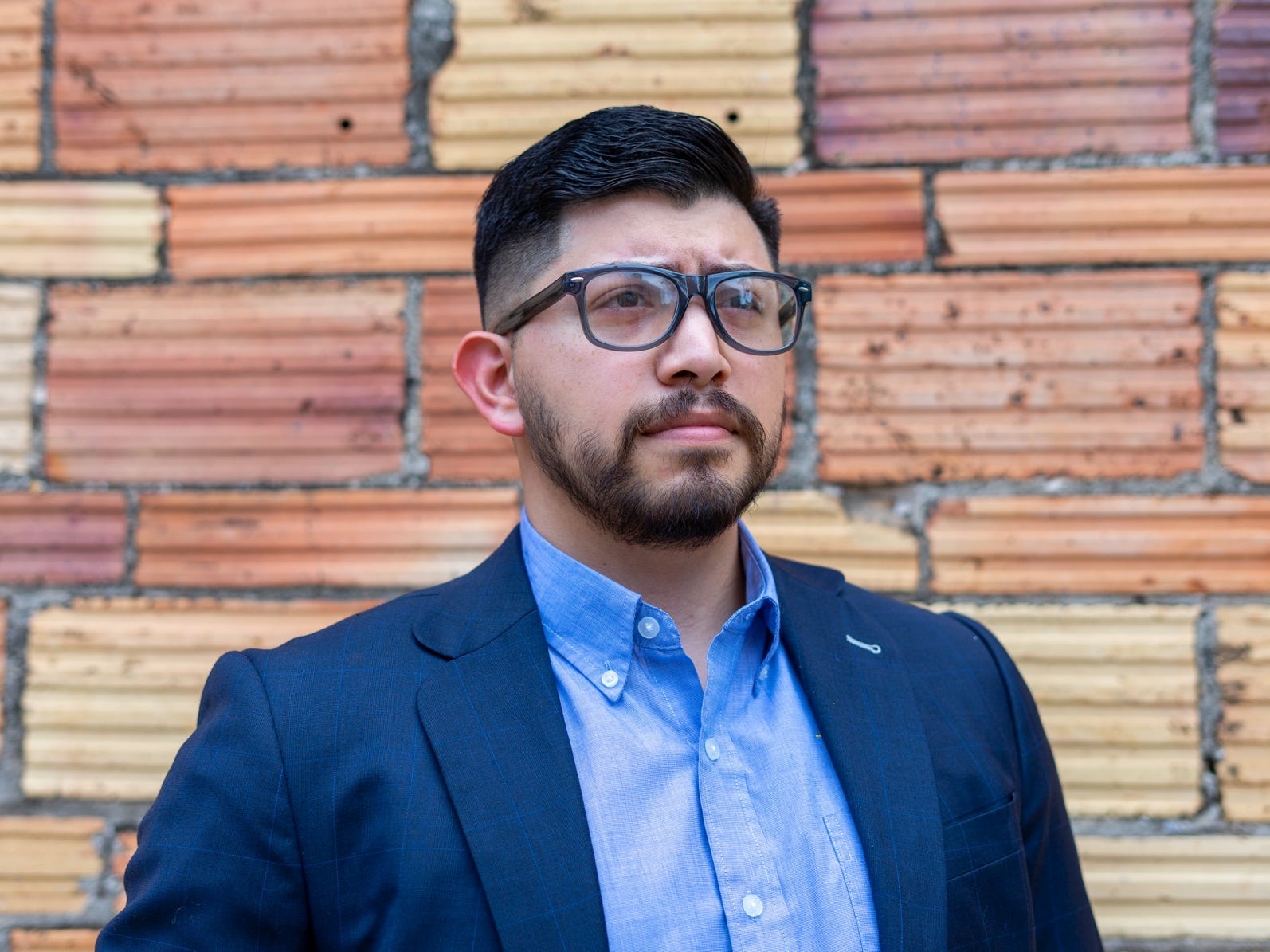
Frank Ramirez
- Frank Ramirez is a third-generation San Antonian and a member of City Council in District 7.
- As director of land use, constituent services, and infrastructure, his goal is to improve the city.
- He wants to keep using an equity lens, invest in public transport, and improve its trails.
- This article is part of a series focused on American cities building a better tomorrow called "Advancing Cities."
When you live in San Antonio, Texas, you see someone you know just about everywhere you go. That's what lifelong resident Frank Ramirez said he loves about the city.
"It's the biggest little city out there," Ramirez, 27, told Insider. "I think it's one of the friendliest cities in Texas, if not the entire nation. From all the places I've been, nothing is like San Antonio. Nothing ever will be. It's home."
Ramirez is a third-generation San Antonian who grew up on the south side of the city and moved away only to attend the University of Texas at Austin, where he majored in government. He said he always wanted to return home to make a difference.
Now, he works with the San Antonio City Council in District 7 – which covers the city's northwest area – as director of land use, constituent services, and infrastructure.
"I get to learn a little bit more about the criteria that the city uses to prioritize where they put specific types of infrastructure and how to implement it," he said.
Here's a look at what Ramirez considers most important for San Antonio as it adapts to a growing population.
Using an equity lens to distribute projects and funds will help eliminate infrastructure disparities
San Antonio has been investing in infrastructure, including recently expanding broadband internet access to students and debuting a smart-streetlight project. But Ramirez said there's still work to do.
"Infrastructurally, San Antonio is not as good as it could be quite yet," he said. "But we have really good city leadership that's paving the way for us to catch up and to be the best that we can be."
Historically, Ramirez said expansion and commerce have been centered downtown and on the north side, while the south, east, and west sides of San Antonio have been underfunded and are home to marginalized populations. Those areas of town had "some of the largest sidewalk gaps in the city" and deteriorated streets, he added.
In 2017, San Antonio began prioritizing funding and infrastructure projects using an "equity lens." The budget-equity tool is designed to consider racial and economic equity in the budgeting process, account for the impact of decisions made, and ensure that all programs and projects help reduce disparities.
"Instead of equally providing the same amount of money to districts, we started looking at other criteria, like Census tracts, Sidewalk Labs, the average score of these streets in specific districts," Ramirez said.
The city's also working to select more diverse contractors and businesses, such as minority and women-owned companies, to perform the work on these projects.
Investing in public transportation is necessary to solve traffic issues
San Antonio is among the top 10 largest cities in the US, and it's growing fast. Ramirez said traffic is getting worse and the city needs better transportation infrastructure.
"The prevailing issue is that San Antonio has a traffic issue, not as bad as LA or Austin or any other large city, but it's there and it's a compounding detriment because we don't have a robust public transportation system," he said.
More transportation alternatives for people who don't own vehicles would make the city more equitable, Ramirez said. San Antonio's mass-transit agency VIA Metropolitan Transit does well with its existing infrastructure, he added, but he believes more investment is needed.
A light-rail system is something Ramirez said he would love to see in San Antonio someday.
"It would be the biggest game-changer," he said. "Not only intracity travel but also intercity travel. Going from the south side of San Antonio to the medical center in a matter of five to 10 minutes, as opposed to 30 to 40 minutes."
In September 2020, the federal government approved a high-speed train between Dallas and Houston that would transport passengers in 90 minutes, but San Antonio wasn't included in the route. A train line between San Antonio and Austin has been studied since the 1980s, and local experts hope the idea might be revived if the new Dallas-to-Houston line is successful.
Biking and walking trail improvements are needed to integrate transportation and recreation
One of Ramirez's favorite infrastructure projects in San Antonio is the newly improved Mission Trail, a biking and hiking trail connecting five historic missions: the Alamo, Mission Concepcion, Mission San Jose, Mission San Juan, and Mission Espada.
Investments created shared bike paths that increased the amount of foot and bike traffic that could travel on the trail, which runs through a "significant part of the city's history," Ramirez said.
"That was one of the coolest improvements that I've seen in my lifetime because I walk and bike there as often as I can, and it's absolutely beautiful," he added. "It's a perfect example of how you can integrate safe transportation and recreation at the same time."
Another favorite is the Howard W. Peak Greenway Trail System, which is a growing network of trails that now encompasses about 80 miles throughout San Antonio.
"They're continually expanding the greenway, which is to the benefit of a lot of people in San Antonio," Ramirez said.
As San Antonio keeps growing, Ramirez said the fabric of the community as a "caring and loving city" will remain.
"San Antonio has changed a lot, but it's also been persistent, and it's also been adaptive to the times," he said. "It's a modern San Antonio, and it's something that's only getting better, in my opinion."


